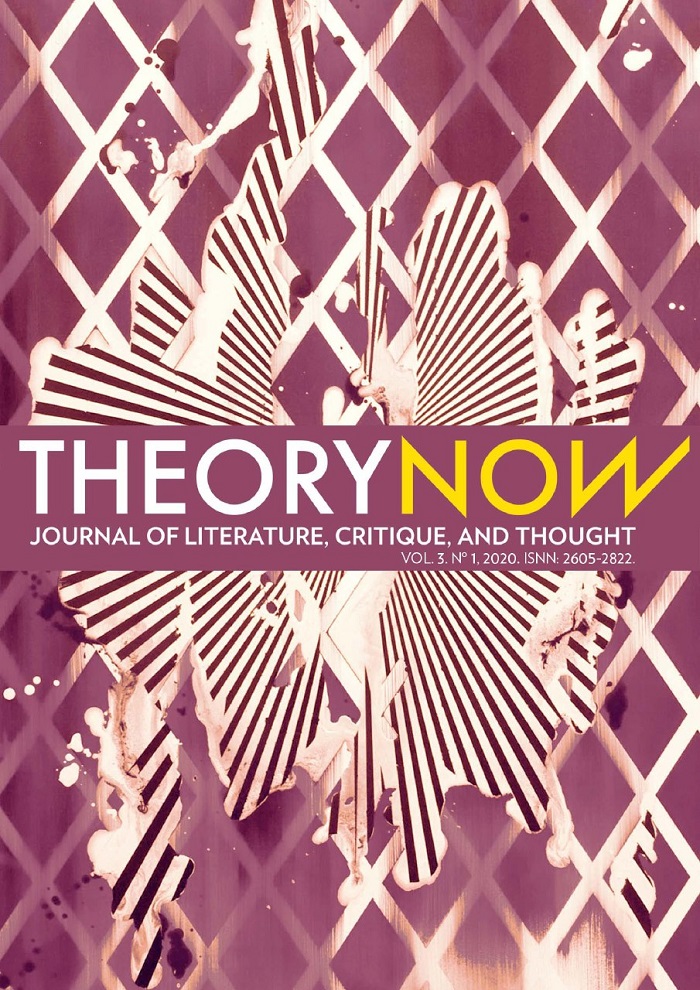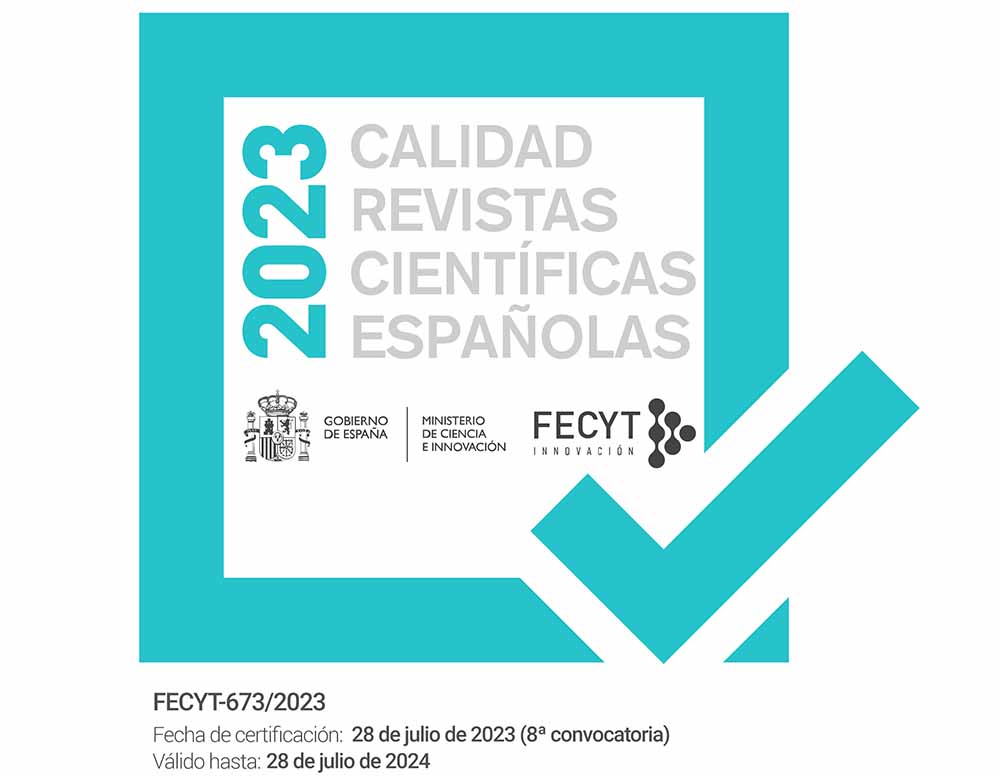Roland Barthes' other self
DOI:
https://doi.org/10.30827/tnj.v3i1.11295Keywords:
Phantom, other, Roland Barthes, Proust.Abstract
The last years of Barthes's life are influenced by the mourning and the death of his mother. He commented under her photo at the Winter's Garden. Then he expressed the love he had for his family by describing their absence. By recalling those loved ones, the writer is in truth looking for his own identity. The author was introduced to the novel through the poetic instant or the haiku and came back to the body of the artist, just like a literature whose death he fears. He tries so, just like the phoenix, to reborn from the ashes by taking the path of romantic creation and repeating the sounds of the words Roland Barthes.
Downloads
References
Bibliographie
Barthes, Roland. Le Neutre, texte établi par Thomas Clerc, Seuil, IMEC, 2002-
_____. Comment vivre ensemble ? Seuil, IMEC, 2002.
_____. « La Mort de l’auteur ». Œuvres complètes, Vol. III, Éric Marty (Ed.). Paris, Seuil, 2002, pp. 40-45.
_____. « Le troisième sens : Notes de recherche sur quelques photogrammes S. M. Eisenstein », Œuvres complètes, Vol. III, Éric Marty (Ed.). Seuil, 2002, pp. 485-506.
_____. « Sade, Fourier, Loyola ». Œuvres complètes, Vol. III, Éric Marty (Ed.). Paris, Seuil, 2002, p. 705.
_____. « Proust et les noms ». Œuvres complètes, Vol. IV, Éric Marty (Ed.). Paris, Seuil, 2002, pp. 66-77.
_____. « La Chambre Claire ». Œuvres complètes, vol. V, Éric Marty (Ed.). Paris, Seuil, 2002, pp. 785-892.
_____. « Du goût à l’extase ». Œuvres complètes, vol. V, Éric Marty (Ed.). Paris, Seuil, 2002, pp. 929-930.
_____. « Fragments d’un discours amoureux ». Œuvres complètes, vol. V, Éric Marty (Ed.). Paris, Seuil, 2002, pp. 29-296.
_____. « Textes posthumes ». Œuvres complètes, vol. V, Éric Marty (Ed.). Paris, Seuil, 2002, p. 982.
_____. « Tels ». Œuvres complètes, vol. V, Éric Marty (Ed.). Paris, Seuil, 2002, pp. 300-307.
_____. « Sur des photographies de Daniel Boudinet ». Œuvres complètes, Vol. V, Éric Marty (Ed.). Paris, Seuil, 2002, p. 317.
_____. « Délibération ». Œuvres complètes, Vol. V, Éric Marty (Ed.). Paris, Seuil, 2002, p. 679.
_____. Journal de deuil. Paris, Seuil, 2009.
_____. La Préparation du roman, cours au Collège de France, Éric Marty (ed.). Seuil, 2015.
Bellon, Guillaume. Une parole inquiète, Barthes et Foucault au Collège de France. Grenoble, ELLUG/Université Stendhal, 2012.
Bougnoux, Daniel. EMPREINTES DE ROLAND BARTHES. Paris, Éditions Cécile Défaut/ INA, Institut National de l’Audiovisuel, 2009.
Chevrier, Jean-François. « Proust par Roland Barthes ». Prétextes : Roland Barthes colloque de Cerisy, A. Compagnon (ed.). Christian Bourgois, 2003, pp. 413-427.
Coste, Claude. Bêtise de Barthes. Klincksieck, Paris, 2011.
_____. « État présent, Roland Barthes ». French Studies, Vol. 69 (LXIX), no. 3, 2015, pp. 363–374.
_____. « Grandeurs et misères du Rolandisme ». Roland Barthes aujourd’hui, Nathalie Piégay et Laurent Zimmermann (dir.). Paris, Hermann, 2016.
Cotilly-Foley, Nora. « L’usage de la photo chez Annie Ernaux ». French Studies, vol. 62, no. 4, 2008, pp. 442-454.
Fallah Nejad, Mohammad Reza. « Le “ haïku” et la création romanesque dans La Préparation du roman de Roland Barthes ». Études de langue et littérature françaises, Revue des Études de la langue Française, no. 12, 2015, pp. 41-54.
_____. « Le Conte de Combray et les noms persans : du voyage à l’écriture ». Studii si cercetari filologice. Seria Limbi Romanice, no.19, 2016, pp. 79-93.
_____. « Retour des personnages mythiques persans dans le Temps Retrouvé : Du conte au roman ». Studii si cercetari filologice. Seria Limbi Romanice No. 20, 2016, pp. 63-77.
_____. « Biographie et autobiographie dans La Préparation du roman ». Revue d’études proustiennes, no. 6, 2017, pp. 471-491.
_____. « Le discours politique dans le Roland Barthes par Roland Barthes : de la préfiguration fragmentaire au romanesque ». Studii Şi Cercetâri Filologice, Seria Limbi Romanice, vol.1, no. 21, 2017, pp. 70-83.
Forest, Philippe. « Blaise Cendrars, ou l'art de léviter parmi les désastres ». La Nouvelle Revue Française, no. 596, 2011, pp. 137-145.
Foucault, Michel. « Qu’est-ce qu’un auteur ? ». Dits et écrits, Daniel Defert et François Ewald (eds.) Paris, Gallimard, 2001.
Gil, Marie. Roland Barthes. Au lieu de la vie. Paris, Flammarion, 2012.
Marty, Éric. Roland Barthes, la littérature et le droit à la mort. Paris, Seuil, 2010.
_____. « Roland Barthes, l’objet photographique ». Roland Barthes aujourd’hui, Nathalie Piégay et Laurent Zimmermann (dir.). Paris, Hermann, 2016, p. 33-43.
Proust, Marcel. À la recherche du temps perdu, Vol. I, II, III, IV. Paris, Gallimard, 2002-3.
Rabaté, Jean-Michel. « Le roman de Roland Barthes ». Barthes après Barthes: Une actualité en questions : actes du colloque international de Pau, 22-24 novembre 1990. Pau, Publications de l'Université de Pau, 1993.
Samoyault, Tiphaine. Roland Barthes, biographie. Paris, Seuil, 2015.
Downloads
Published
How to Cite
Issue
Section
License
Theory Now. Journal of Literature, Critique, and Thought is an immediate open-access publication which is available at no cost for readers and authors alike. Authors are not charged any kind of fee for the editorial processing of their articles. Reading, downloading, copying, distributing, printing, searching, linking or reusing all published articles for non-commercial uses is allowed on the condition of citing the author, the journal and the editing body. All intellectual material published in this journal is protected under a Creative Commons Attribution-NonCommercial 3.0 Spain license.
Dissemination of the articles in social (Facebook, Twitter, Linkedin, etc.) and scientific networks (ResearchGate, Academia.edu, etc.), public repositories at universities and other institutions, blogs, personal or institutional websites, Google Scholar, ORCID, ResearchID, ScopusID, etc. is strongly encouraged. In all cases, the intellectual property of the articles and any possible monetary profits derived from them belong exclusively to the authors.


















